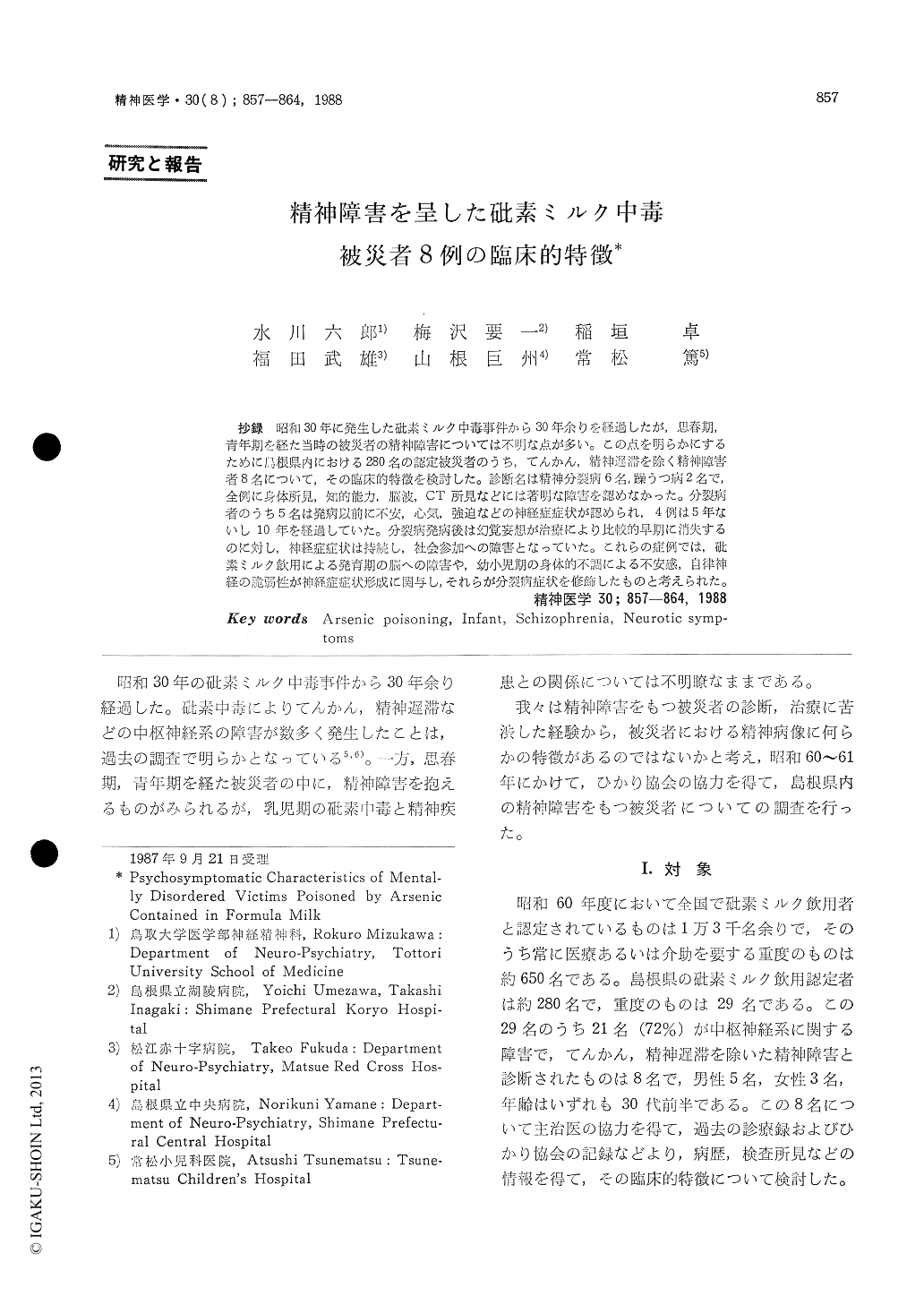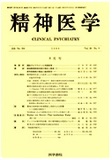Japanese
English
- 有料閲覧
- Abstract 文献概要
- 1ページ目 Look Inside
抄録 昭和30年に発生した砒素ミルク中毒事件から30年余りを経過したが,思春期,青年期を経た当時の被災者の精神障害については不明な点が多い。この点を明らかにするために島根県内における280名の認定被災者のうち,てんかん,精神遅滞を除く精神障害者8名について,その臨床的特徴を検討した。診断名は精神分裂病6名,躁うつ病2名で,全例に身体所見,知的能力,脳波,CT所見などには著明な障害を認めなかった。分裂病者のうち5名は発病以前に不安,心気,強迫などの神経症症状が認められ,4例は5年ないし10年を経過していた。分裂病発病後は幻覚妄想が治療により比較的早期に消失するのに対し,神経症症状は持続し,社会参加への障害となっていた。これらの症例では,砒素ミルク飲用による発育期の脳への障害や,幼小児期の身体的不調による不安感,自律神経の脆弱性が神経症症状形成に関与し,それらが分裂病症状を修飾したものと考えられた。
In 1955, many babies or infants were nationwide poisoned by arsenic that was accidentally mixed into formula milk prepared by a maker in Japan. Of 280 acknowledged victims who resided in Shimane Prefecture in 1985, 6 had suffered from schizophrenia, and 2 from manic-depressive illness. We studied the relation of their psychosymptomatic characteristics to the arsenical poisoning in their infancy.
The 8 subjects showed no severe abnormalities in physical features, intellectual ability, electro-encephalographic patterns and computed tomographic findings. Of the 6 schizophrenic patients, 5 had shown neurotic symptoms such as anxiety, hypochondria and obsession before the onset of the disease, which had lasted for 5 to 10 years in 4 of the 5 patients. After the onset of schizophrenia, hallucination and/or delusion disappeared in a relatively short period under the influence of pharmacotherapy, but neurotic symptoms persisted longer, interfering with their engaging in social activities.
The formation of the neurotic symptoms may be ascribed to the cerebral impairment and/or fragility in the autonomic nerves due to the arsenical poisoning during the developmental periods, and to anxiety aroused by bad physical conditions in infancy/childhood. We considered that these neurotic symptoms had modified the clinical courses of these 5 schizophrenic patients.

Copyright © 1988, Igaku-Shoin Ltd. All rights reserved.


